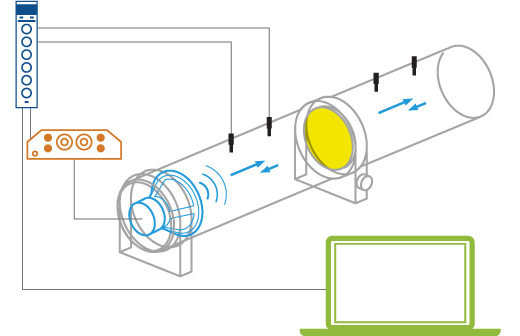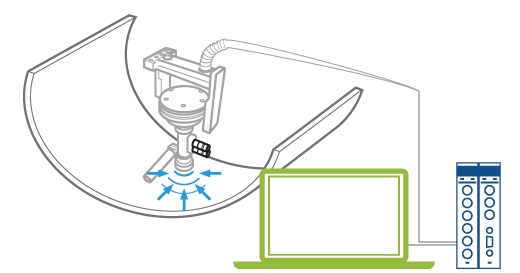
Acoustic material testing
Testing materials for their acoustic characteristics lets you understand the contribution they will make to the overall acoustic experience of a room, vehicle, etc.
The effect of materials in construction and as insulation makes a huge difference in the acoustic experience. In offices and classrooms, the use of special materials can transform a space and with it the activities inside. In some applications – such as aircraft engines – they are what keep the vehicle within legal exterior noise limits. In others, like wind tunnels and anechoic chambers, acoustic materials are essential components in creating a noise-free, uniform test environment.
Creating an acoustic environment
To create a specific acoustic environment, it is necessary to understand the acoustic performance of the materials used. Testing materials for their acoustic characteristics lets architects, designers and engineers understand the contributions they can make to the overall sound, in terms of absorption, reflection, impedance, admittance; including transmission loss. Repeatability and precision are the keys to effective material testing – and data must be exportable to update predictive models.
Mitigating unwanted sound
To remove unwanted noise, one needs to match an acoustic material to the specific characteristics of the sound. But selecting the right material for the job is challenging. Certain materials alter some sound components, such as high frequencies, more than others do. Also, the selected material must create the desired acoustic effect in concert with other materials in the structure. What’s more, the structure’s final shape can affect the acoustic performance of its materials, such as the nacelle liners in an aircraft engine. A precise understanding of the material’s acoustic characteristics, such as its performance at certain frequencies, is essential – both before and after structural integration.
Acoustic material testing is the process for determining the acoustic characteristics of materials in terms of absorption, reflection, impedance, admittance and transmission loss. Growing focus on noise control issues, combined with the emergence of sound quality in product design, makes acoustic material testing increasingly relevant to engineers, designers and manufacturers in a broad range of industries. For example, improving cabin acoustic comfort by providing optimal acoustic material performance against weight and volume is one of today’s challenges in the ground transportation and aerospace industries. Similarly, protection against noise in dwellings and at the workplace most often requires the appropriate selection of noise-reducing treatments.
A range of standards covers acoustic material testing, prescribing well-defined acoustical conditions and special instrumentation to ensure accuracy and repeatability. Our complete acoustic material testing systems make measurements on small samples according to ISO 10534-2, ASTM E1050-12 and ASTM E2611-17 international standards.
System suggestion
PULSE Acoustic Material Testing in a Tube Type 7758 is software for determining the acoustic properties of noise control materials, whether used to absorb airborne sound or to reduce airborne sound transmission. It works in conjunction with Brüel & Kjær’s Impedance Tube Kits, Transmission Loss Tube Kit and any other custom measurement tube.
Increasingly stringent aerospace environmental regulations are demanding improvements in liner attenuation, which is driving ever-improved impedances in installed acoustic liners. As a result, fully bonded panels must now be assessed for their true effective acoustic behaviour in their final condition. These measurements are superseding the traditional geometric and DC load flow methods.
System suggestion
The Portable Impedance Meter System is a lightweight, compact, robust and user-friendly system suitable for both research and production quality control impedance measurements up to 150 dB SPL. Based on the two-microphone transfer function test method, it includes PULSE Material Testing and Impedance Meter software, a LAN-XI generator module as the input module for the two microphones, and a generator for the impedance meter sound source and for control of the environmental parameters. A power amplifier, conveniently housed in a double LAN-XI casing, provides the amplification of the generator signal. A portable impedance tube, accessories and a carrying case that holds all the elements of the system, are also included.
Related products
Related information

Iscriviti alla nostra Newsletter e ricevi le informazioni più recenti dal mondo del suoni e delle vibrazioni


